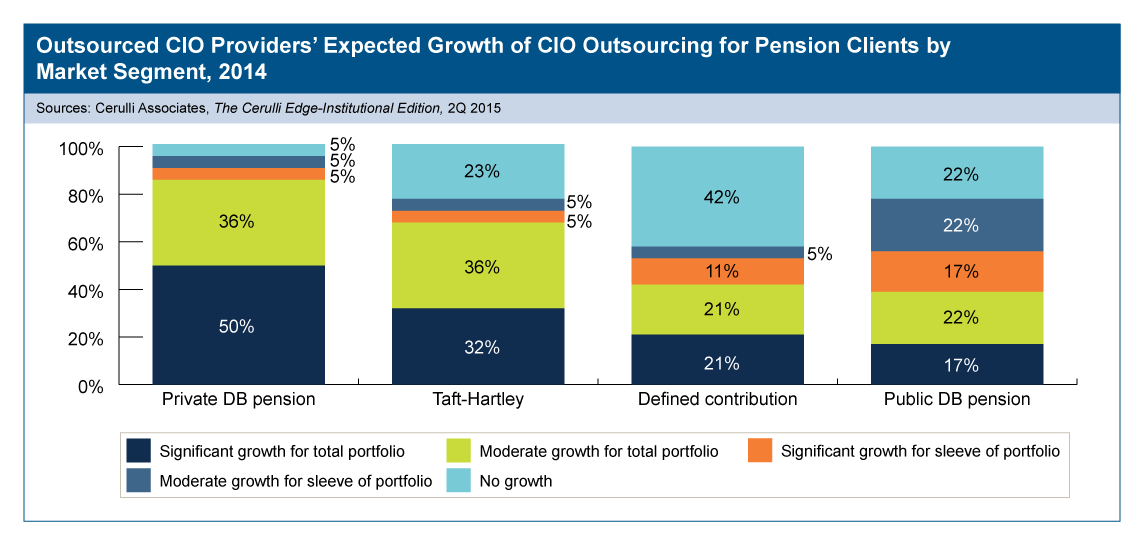A growing need for customization and mounting demand are likely to bring about a new wave of outsourced-CIO (OCIO) providers, according to analytics firm Cerulli Associates.
After working with the larger firms that dominated the OCIO scene for years, the report said institutional investors are beginning to reevaluate their relationships.
“It’s only a matter of time before the forces of supply and demand are evidenced. The winners of OCIO version 2.0 are likely to be well-resourced firms.”
Instead of choosing among firms that offer similar asset allocation and manager selection services, asset owners are seeking those that could provide more customized and comprehensive management—at a lower cost.
“The OCIO world is talking about the advent of a 2.0 phase,” said Alexi Maravel, associate director at Cerulli. “Many established providers acknowledge a new generation of firms providing more comprehensive customized services to institutions currently outsourcing investment management and other offerings.”
According to the report, OCIO managers are seeing a greater demand for investment capabilities across asset classes, particularly in alternatives.
Asset owners, especially corporate pension plans, are also increasingly seeking liability-driven investing services from their OCIO managers, Cerulli said.
Specifically, plan sponsors have tended to prefer managers with long-duration fixed-income expertise, quantitative skills to calculate liabilities, the ability to develop de-risking glidepaths, and experience “managing derivatives overlay strategies to more accurately hedge liabilities,” the report said.
And while mostly small funds lacking internal resources tended to outsource in the past, the report said OCIO managers beginning to win larger mandates.
CIO’s 2015 OCIO survey found a 19% surge in investors of all sizes handing over their entire portfolio to a third-party manager. For portfolios worth more than $15 billion, there was a 145% increase.
However, such uptick in interest and changing demands from investors are also putting pressure on OCIO managers to offer services at lower fees, according to Cerulli.
New and less-resourced entrants to the OCIO industry are likely to feel the impact most strongly, the report said. They may cut fees to capture business, but could also fall victim to “the eventual shake-out or consolidation” if they fail to earn enough revenue.
“It’s only a matter of time before the forces of supply and demand are evidenced,” the report said. “The winners of OCIO version 2.0 are likely to be well-resourced firms.”

Related Content: The Downfall of a Boutique OCIO; 2015 OCIO Survey, 2015 OCIO Buyer’s Guide
